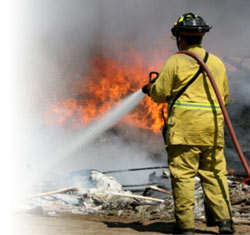Preparing for an Emergency
Emergencies in the workplace cannot be eliminated. But if you have an emergency action plan in place and workers have been trained to respond quickly and appropriately, you can optimize efficiency, relieve anxiety, and in some cases, save lives.
Emergency evacuations can be started in response to a fire, a chemical release, a natural disaster, a violent incident, or any other life-threatening disaster. When an emergency occurs in the workplace, you can’t afford to rely on guesswork. It will then be too late to try to find the information you need.

You should also be familiar with the various alarm sounds and lights in your workplace. Alarm systems typically have different signals for fire and intruder emergencies. There may also be specific alarms related to hazardous equipment, chemicals, gases, and other hazards.
Evacuation Procedures:
-
As soon as you hear the alarm, drop whatever you are doing and leave the building.
-
Remain calm.
-
Shut down all hazardous operations.
-
Leave the area in an orderly fashion. Close doors, but do not lock.
-
Assist disabled persons.
-
Move quickly, but don’t run.
-
Follow established routes to exit the building. If one route is blocked by fire or smoke, use a backup route.
- Use stairways. Never use elevators. The power may be cut off and the elevator could become a fatal trap.
Make safety a reality and don’t be a fatality!!
Download Flyer: STOTW_2_Preparing for an Emergency.pdf (95.26 kb)

